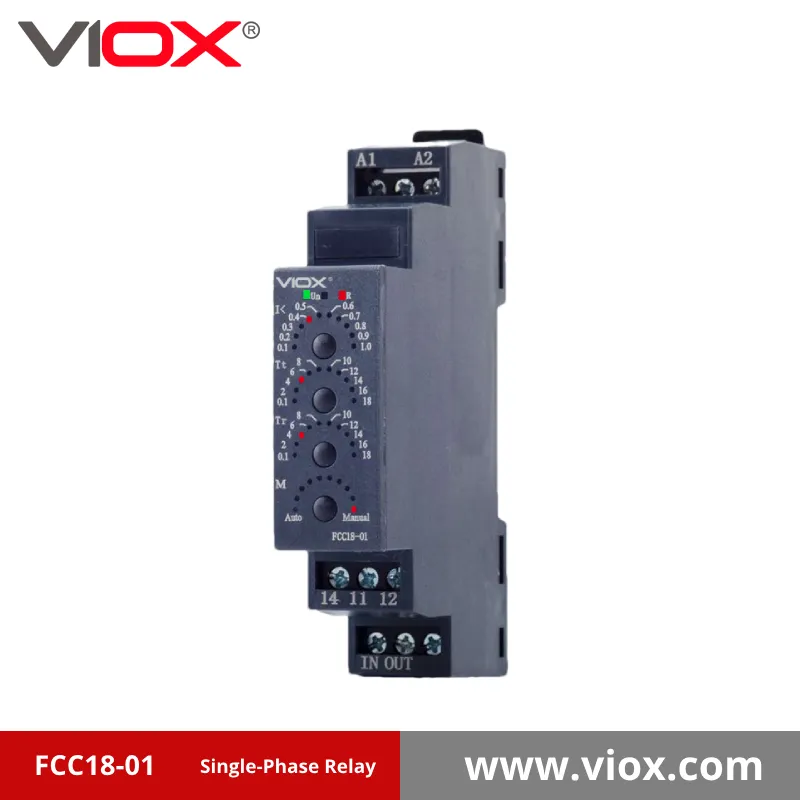Understanding the fundamental differences between single-phase and three-phase relays is crucial for electrical engineers, technicians, and anyone working with power protection systems. This comprehensive guide breaks down everything you need to know about these essential protective devices.
What Are Protective Relays and Why Are They Important?
Protective relays are devices designed to detect abnormal conditions in electrical circuits and initiate appropriate control actions, typically tripping circuit breakers to isolate faulty sections. They serve as the guardians of electrical systems, protecting expensive equipment from damage and preventing potential hazards.
Before diving into the differences between single-phase and three-phase relays, it’s important to understand the basic function of relays in electrical protection systems:
- Detection: Monitoring electrical parameters such as current, voltage, frequency, and phase angle
- Decision: Determining whether measured values indicate normal or abnormal conditions
- Action: Initiating appropriate responses when abnormal conditions are detected
Single-Phase Relays: Fundamentals and Applications
What Is a Single-Phase Relay?
A single-phase relay is designed to monitor and protect electrical circuits operating on a single-phase power supply. These relays measure electrical parameters from one phase and neutral, making decisions based on measurements from this single power line.
Key Characteristics of Single-Phase Relays
- Circuit Configuration: Designed for single-phase power systems with one live conductor and one neutral
- Measurement: Monitors electrical parameters from a single phase
- Simpler Design: Generally less complex than three-phase counterparts
- Lower Cost: Typically more affordable due to simpler construction
- Compact Size: Usually smaller and require less installation space
Common Applications of Single-Phase Relays
Single-phase relays find widespread use in various settings:
- Residential Applications: Protection for household appliances and circuits
- Light Commercial Settings: Small offices, shops, and similar facilities
- Single-Phase Motors: Protection for pumps, fans, and small machinery
- Lighting Circuits: Protection for commercial and industrial lighting systems
- Control Circuits: Monitoring and protection of control systems in larger installations
Types of Single-Phase Relays
Several specialized single-phase relay variants serve specific protective functions:
- Overcurrent Relays: Detect excessive current flow
- Undervoltage/Overvoltage Relays: Monitor voltage deviations
- Frequency Relays: Detect abnormal frequency fluctuations
- Thermal Overload Relays: Protect against overheating
- Phase Failure Relays: Detect loss of phase in supplied power
Three-Phase Relays: Fundamentals and Applications
What Is a Three-Phase Relay?
Three-phase relays are designed for three-phase power systems, which use three conductors carrying alternating currents of the same frequency, offset by 120 degrees. These relays simultaneously monitor all three phases to detect both symmetrical and asymmetrical faults.
Key Characteristics of Three-Phase Relays
- Circuit Configuration: Designed for three-phase systems with three live conductors
- Comprehensive Monitoring: Simultaneously measure parameters across all three phases
- Complex Design: More sophisticated to handle multiple phase relationships
- Higher Cost: Generally more expensive due to additional components and functionality
- Advanced Protection: Can detect phase-to-phase faults and phase imbalances
Common Applications of Three-Phase Relays
Three-phase relays are essential components in:
- Industrial Settings: Protection for manufacturing equipment and processes
- Commercial Buildings: Large HVAC systems and building management
- Power Distribution Systems: Substations and grid infrastructure
- Three-Phase Motors: Industrial motors, pumps, and heavy machinery
- Generation Systems: Protection for generators and associated equipment
Types of Three-Phase Relays
Key variants of three-phase relays include:
- Directional Relays: Detect fault current direction
- Distance Relays: Determine fault location based on impedance measurement
- Differential Relays: Compare currents entering and leaving protected zones
- Phase Sequence Relays: Monitor correct phase sequence
- Power Factor Relays: Monitor changes in power factor
Critical Differences Between Single-Phase and Three-Phase Relays
Structural and Design Differences
| Feature | Single-Phase Relay | Three-Phase Relay |
|---|---|---|
| Number of Inputs | One phase input plus neutral | Three phase inputs |
| Circuitry Complexity | Simpler internal circuitry | More complex internal design |
| Size | Generally compact | Typically larger |
| Terminal Connections | Fewer connection points | More connection terminals |
| CT/PT Requirements | Requires fewer instrument transformers | Requires more instrument transformers |
Functional Differences
| Functionality | Single-Phase Relay | Three-Phase Relay |
|---|---|---|
| Fault Detection Capability | Limited to single-phase faults | Can detect phase-to-phase and three-phase faults |
| Phase Imbalance Detection | Not possible | Can detect phase imbalances |
| Directional Sensing | Limited | More comprehensive |
| Setting Complexity | Fewer parameters to set | More complex parameter settings |
| Coordination | Simpler coordination schemes | More complex coordination requirements |
Performance Differences
| Performance Aspect | Single-Phase Relay | Three-Phase Relay |
|---|---|---|
| Protection Scope | Limited to single-phase issues | Comprehensive three-phase protection |
| Sensitivity | May miss phase-to-phase issues | Higher sensitivity to system anomalies |
| Selectivity | Good for simple networks | Better selectivity in complex networks |
| System Integration | Basic integration options | Advanced integration capabilities |
| Reliability for Complex Systems | Adequate for simple systems | Superior for complex power systems |
Selection Criteria: Choosing Between Single-Phase and Three-Phase Relays
When determining which type of relay to use, consider these key factors:
Power System Type
- Single-Phase Systems: Naturally require single-phase relays
- Three-Phase Systems: Generally require three-phase relays, though single-phase relays may be used for specific applications within these systems
Protection Requirements
- Basic Protection: Single-phase relays may be sufficient
- Comprehensive Protection: Three-phase relays offer more complete coverage
- Specific Fault Types: Different relays excel at detecting different fault types
Budget Considerations
- Initial Cost: Single-phase relays typically have lower upfront costs
- Installation Cost: Three-phase relays often require more complex installation
- Lifecycle Cost: Consider maintenance and potential upgrade requirements
Installation Space
- Limited Space: Single-phase relays may be preferred
- Control Panel Design: Space allocation affects relay selection
- Expansion Possibilities: Consider future system growth
Implementation Best Practices
Installation Guidelines
For optimal relay performance, regardless of type:
- Follow Manufacturer Specifications: Adhere to recommended mounting and connection procedures
- Proper Grounding: Ensure adequate grounding for stable operation
- Environmental Considerations: Account for temperature, humidity, and vibration
- Accessibility: Position relays for easy access during maintenance
- Wiring Separation: Maintain separation between power and control wiring
Setting and Configuration
Proper relay settings are crucial:
- System Study: Base settings on thorough system analysis
- Coordination: Ensure proper coordination with other protective devices
- Testing: Verify settings through simulation and testing
- Documentation: Maintain comprehensive records of all settings
- Periodic Review: Reassess settings after system changes
Maintenance Recommendations
To ensure continued reliability:
- Regular Testing: Schedule periodic functional testing
- Visual Inspection: Check for physical damage or environmental effects
- Cleaning: Remove dust and contaminants
- Firmware Updates: Keep digital relay firmware current
- Performance Monitoring: Track relay operations and response times
Common Challenges and Troubleshooting
Single-Phase Relay Issues
Typical problems and solutions for single-phase relays:
- Nuisance Tripping: Often caused by incorrect threshold settings
- Solution: Review and adjust settings based on actual load conditions
- Failure to Trip: May result from incorrect connections
- Solution: Verify all wiring and connections according to diagrams
- Slow Response: Could indicate relay deterioration
- Solution: Test relay operation times and replace if necessary
Three-Phase Relay Issues
Common challenges with three-phase relays:
- Setting Complexity: More parameters can lead to setting errors
- Solution: Use manufacturer software tools and verify settings
- Coordination Problems: Difficulty coordinating with other protection devices
- Solution: Conduct comprehensive coordination studies
- Communication Failures: In digital relays with communication capabilities
- Solution: Check communication wiring and protocol settings
Future Trends in Relay Technology
The field of protective relays continues to evolve:
Digital Integration
- IEC 61850 Implementation: Standardized communication protocols
- Smart Grid Integration: Enhanced monitoring and control capabilities
- Remote Management: Increased capabilities for off-site monitoring and adjustment
Advanced Analytics
- Predictive Maintenance: Using operational data to predict failures
- Fault Diagnosis: More sophisticated fault type and location identification
- System Health Monitoring: Continuous assessment of protection system status
Enhanced Functionality
- Adaptive Protection: Self-adjusting settings based on system conditions
- Wide Area Protection: Coordinated protection across larger network areas
- Integrated Protection Functions: Combining multiple protection elements in single devices
Conclusion: Making the Right Choice for Your Application
The selection between single-phase and three-phase relays depends on a thorough understanding of your specific application requirements. While single-phase relays offer simplicity and cost advantages for basic applications, three-phase relays provide comprehensive protection essential for complex power systems.
Key takeaways to remember:
- System Matching: Select relay types that match your power system configuration
- Comprehensive Assessment: Consider all aspects including protection needs, budget, and space
- Future-Proofing: Account for potential system expansions and technology advancements
- Expert Consultation: When in doubt, consult with protection system specialists
- Regular Reevaluation: Periodically assess whether your relay protection remains adequate
By understanding the fundamental differences between single-phase and three-phase relays outlined in this guide, you can make informed decisions that ensure proper protection for your electrical systems.
FAQ: Single-Phase vs Three-Phase Relays
Q: Can I use single-phase relays in a three-phase system?
A: Yes, in certain applications. Single-phase relays can be used for specific protection functions within three-phase systems, but won’t provide complete three-phase protection. Multiple single-phase relays would be needed to cover all phases.
Q: Are digital relays available for both single-phase and three-phase applications?
A: Yes. Modern digital relay platforms support both single-phase and three-phase protection functions, often within the same physical device through different setting configurations.
Q: How do I know if my relay is functioning properly?
A: Regular testing is essential. This includes secondary injection testing where test currents and voltages are applied to verify the relay operates at the correct thresholds. Many modern relays also have self-diagnostic functions.
Q: What standards govern relay performance?
A: Key standards include IEEE C37.90 for relay performance, IEC 60255 for measuring relays, and specific utility standards that may apply in your region.
Q: How frequently should protective relays be tested?
A: Industry standards typically recommend testing intervals of 1-3 years, though critical applications may require more frequent testing. Always follow local regulations and manufacturer recommendations.




